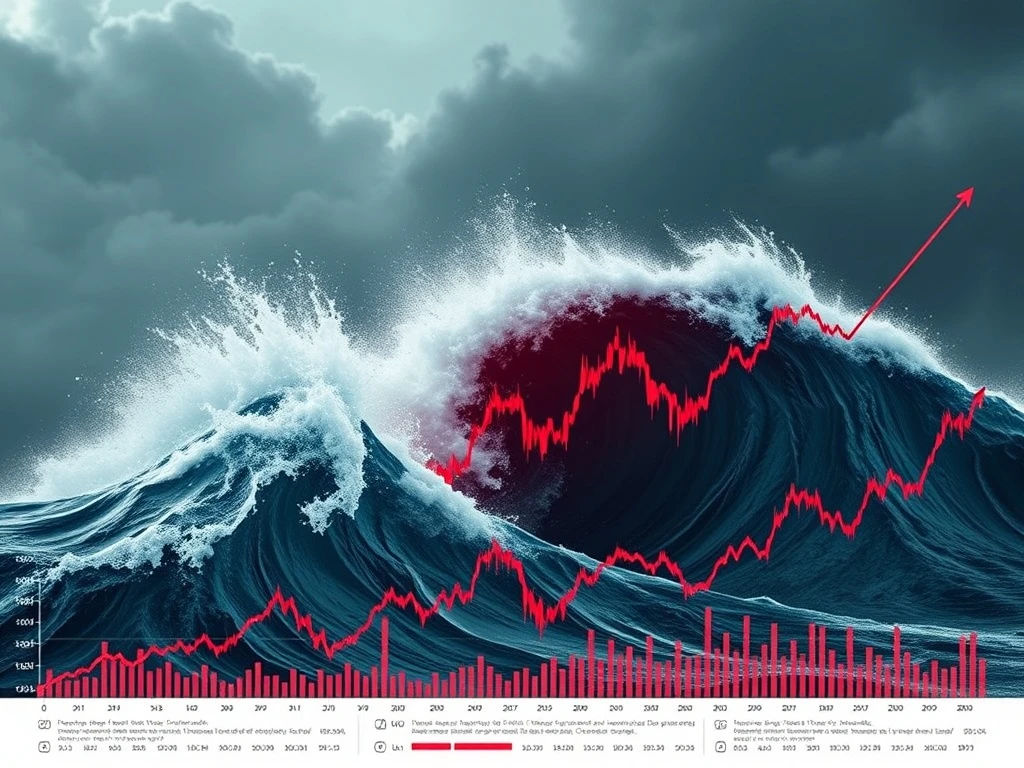Financial markets currently face a silent but dangerous bond market crisis that could trigger widespread stock market declines. Consequently, investors must understand this developing threat immediately.
The Growing Bond Market Crisis Explained
Yields on government bonds have surged dramatically recently. This bond market crisis stems from several key factors:
- Rising inflation expectations pushing yields higher
- Central bank policy shifts affecting bond prices
- Increased government borrowing creating supply pressures
- Global economic uncertainty driving volatility
How the Bond Crisis Impacts Stock Markets
The current bond market crisis directly affects equity valuations through multiple channels. Higher bond yields make fixed income investments more attractive relative to stocks. Additionally, rising borrowing costs pressure corporate profits significantly. Many companies face increased interest expenses on their debt. This reduces earnings and stock prices consequently.
Expert Warnings About Market Contagion
Seasoned strategists now warn about potential spillover effects. The bond market crisis could trigger a broader financial contagion. Historically, bond market disruptions precede stock market corrections. Therefore, investors should monitor several critical indicators carefully.
Three Critical Warning Signs to Monitor
Investors must watch these key metrics closely:
- 10-year Treasury yield movements above 4.5%
- Yield curve inversion patterns deepening
- Corporate bond spread widening indicating stress
Protective Strategies for Investors
Smart investors can implement defensive measures during this bond market crisis. Diversification across asset classes remains crucial. Quality dividend stocks provide some protection. Short-term bonds offer yield without excessive risk. However, professional advice is recommended always.
Historical Precedents and Lessons
Previous bond market crises provide valuable insights. The 1994 bond market crash affected stocks temporarily. The 2013 taper tantrum caused brief volatility. However, markets recovered relatively quickly each time. Current conditions may differ substantially though.
FAQs: Bond Market Crisis and Stock Impact
What exactly constitutes a bond market crisis?
A bond market crisis involves rapidly rising yields, falling prices, and reduced liquidity in fixed income markets, creating systemic financial stress.
How long do bond crises typically affect stocks?
Historical patterns show stock impacts lasting 3-6 months, but duration varies based on crisis severity and economic conditions.
Which sectors suffer most during bond crises?
Interest-sensitive sectors like utilities and real estate typically decline first, followed by growth stocks and leveraged companies.
Should investors sell all bonds during a crisis?
Not necessarily. Quality short-term bonds and Treasury securities often provide stability during equity market volatility.
What indicators signal the crisis is ending?
Yield stabilization, improved bond auctions, and central bank intervention typically indicate crisis resolution approaching.
How can retail investors protect themselves?
Diversification, quality focus, and professional guidance help navigate bond market crises effectively while minimizing stock losses.














